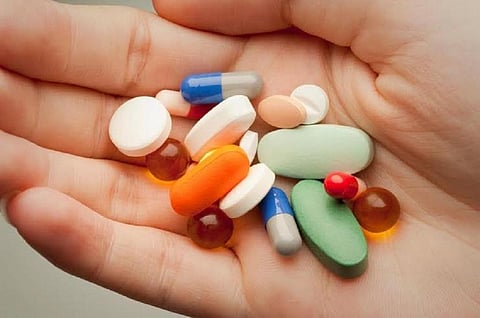Antimicrobial resistance: India needs waste management, process control to prevent antibiotic pollution
The domestic pharmaceutical industry needs to take the lead in limiting antibiotic pollution — one of the biggest problems the world is staring at.
Almost half, or 43 per cent, of the world’s rivers are contaminated with active pharmaceutical ingredients in concentrations that can have disastrous ramifications on health. The industry must prioritise wastewater management and process controls to limit antibiotic pollution and AMR.
There is widespread acknowledgement of the interconnectivity between humans, animals, and the environmental ecosystem. But unsustainable development patterns due to anthropological activities continue to usher in a climate crisis that has far-reaching consequences.
The interdependence between human and animal health was first recognised in 1856 by Rudolf Virchow, the father of modern medicine. World leaders later put it together to form the Manhattan Principles that formed the basis of the One Health concept.
The recently adopted Glasgow Climate Pact has called upon countries to facilitate the adoption of greener technologies to phase out the use of fossil fuels. The development and deployment of such technologies is also critical for the pharmaceutical sector that has formed the backbone of the growth of many economies including India.
While the sector plays a fundamental role in improving health outcomes through the invention of life-saving products, its emission intensity is 55 per cent more than the automotive sector.
The release of untreated effluents into the soil and water bodies add to the pollution of the environment during the manufacturing of various pharmaceuticals, including antibiotics. Further, untreated antibiotic residues also accelerate the build-up of antimicrobial resistance (AMR).
AMR is often dubbed as one of the top 10 public health threats facing humanity. It occurs when disease-causing pathogens develop a resistance against the pharmaceuticals that could have neutralised them.
The build-up of AMR can happen due to several factors across the human, animal, and environmental ecosystems. In 2019, AMR accounted for more than half a million deaths in the European region and about five million globally.
Pivoting to sustainable waste management and process-control practices assumes acute significance in the Indian context. India already accounts for 20 per cent of the global supply of medication, making it the largest supplier of generic medicines worldwide.
India’s production capacity is all set to expand further with the government’s recent impetus on the domestic production of pharmaceuticals. Against this background, the country’s National Action Plan on AMR (NAP-AMR) called for limiting pharmaceutical pollution.
Strategic Pillars 2 and 3 under the NAP-AMR focused on developing frameworks for the surveillance of residues discharged in the environment and developing a plan to reduce the environmental impact on AMR, respectively. However, this policy impetus is yet to translate into on-ground implementation.
Recently, widescale pharmaceutical pollution has been reported across the country, particularly in pharmaceutical hubs like Himachal Pradesh, Andhra Pradesh, and Telangana. This was also reiterated by a study that reported dangerous levels of antibiotic residues in Indian rivers.
Apart from government regulation, there is a need for the domestic Indian pharmaceutical industry to optimise its waste management and process control to limit the rising antibiotic pollution in the country. Adopting innovative technology and self-regulation can help the industry reduce its carbon footprint and minimise its environmental impact.
The former is also evident from Centrient Pharmaceuticals Netherlands BV’s plant at Toansa, Punjab, where the adoption of state-of-art API technology led to a 60-62 per cent reduction in the plant’s carbon footprint.
The AMR Industry Alliance (AMRIA) has developed the Predicted No-Effect Concentrations (PNEC) criteria further to facilitate the industry in regulating its discharge of effluents. The compliance to PNEC value for Centrient’s oral API product line and supply chain has helped the company reduce the environmental impact of manufacturing.
Additionally, the efforts of the industry must be supported by the government by incentivising sustainable procurement practices. The government can take a cue from countries like the United Kingdom, Norway, Sweden and Germany, among others, which have policies in place that provide benefits to manufacturers with greener practices.
Adherence to these practices will also prevent the Indian pharmaceutical industry from losing its competitive advantage in export markets.
The containment of AMR in India is crucial for realising several policy goals, including the United Nations Sustainable Development Goals.
While collective action is needed from various stakeholders, the domestic pharmaceutical industry should also take the lead, especially in limiting antibiotic pollution.
AMR is everybody’s problem and in line with the theme of the seventh World Antimicrobial Awareness Week, I would like to urge the policymakers, academia, healthcare experts, industry, environmentalists and the government to join hands and prevent the silent pandemic of AMR.
Suman Sharma is the director for sustainable antibiotic manufacturing, Centrient Pharmaceuticals
Views expressed are the author’s own and don’t necessarily reflect those of Down To Earth


